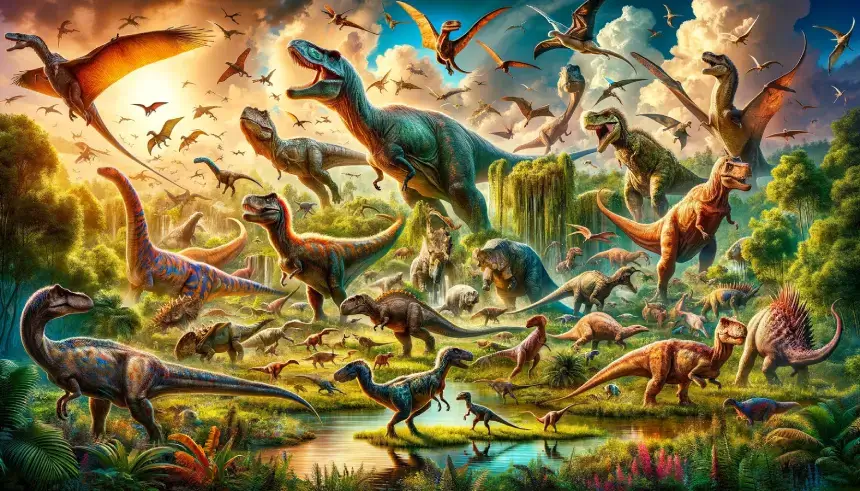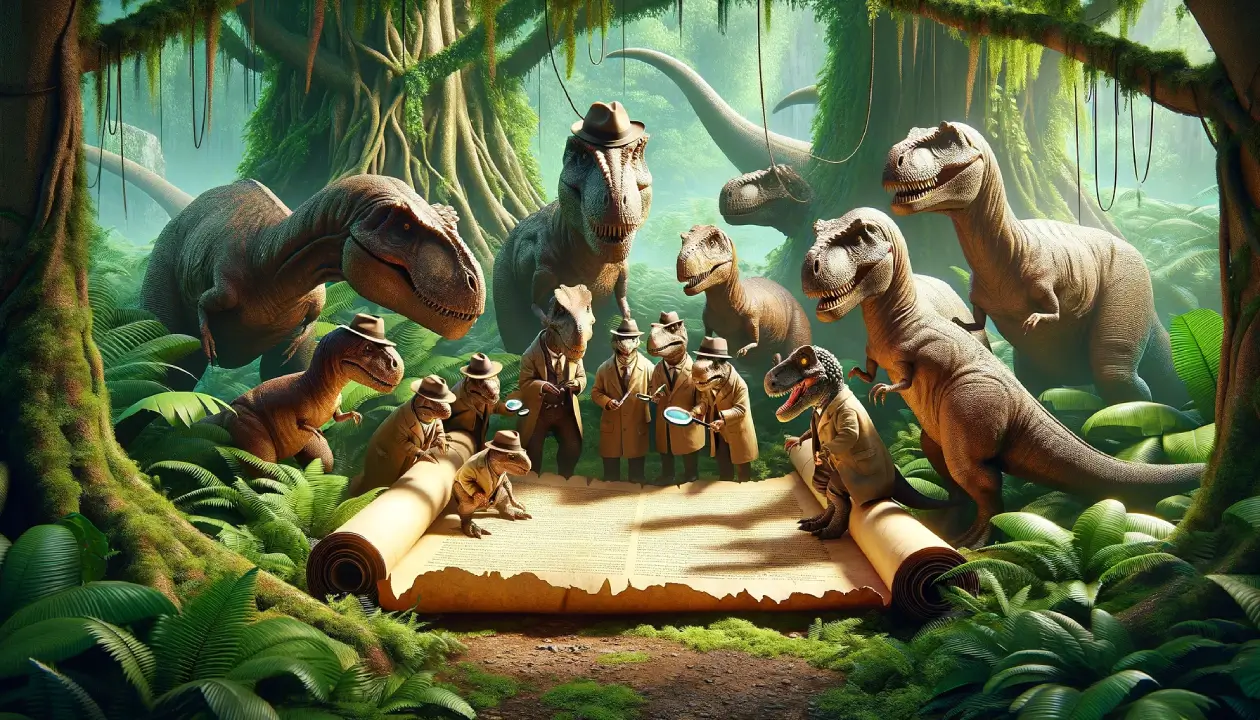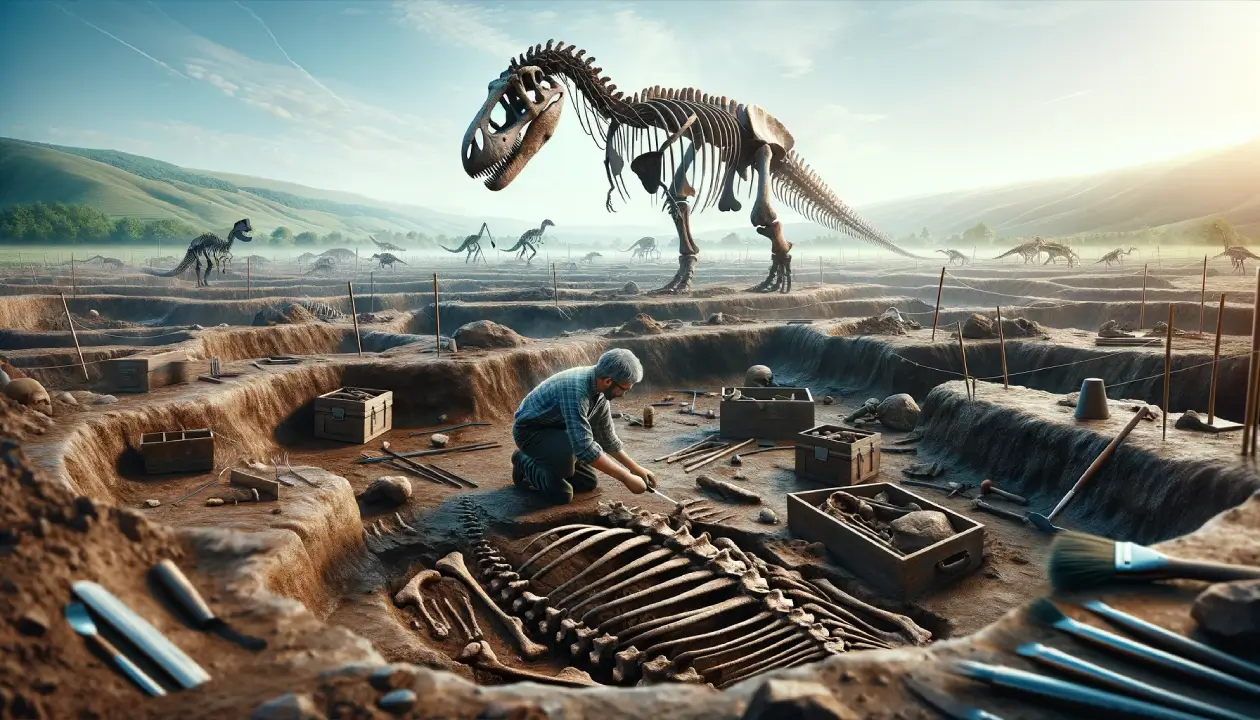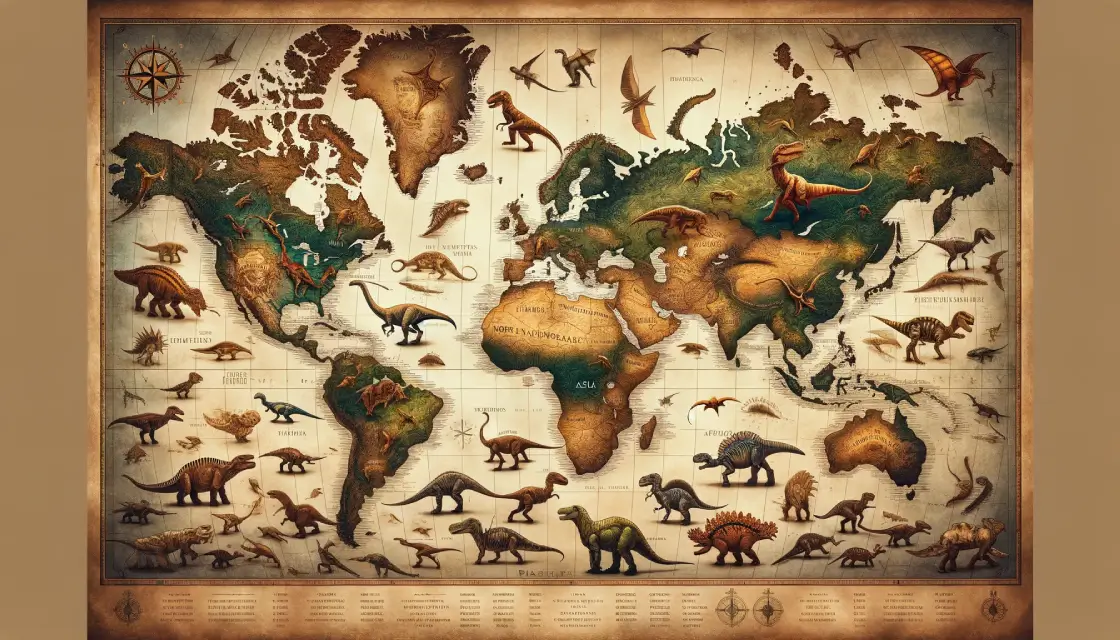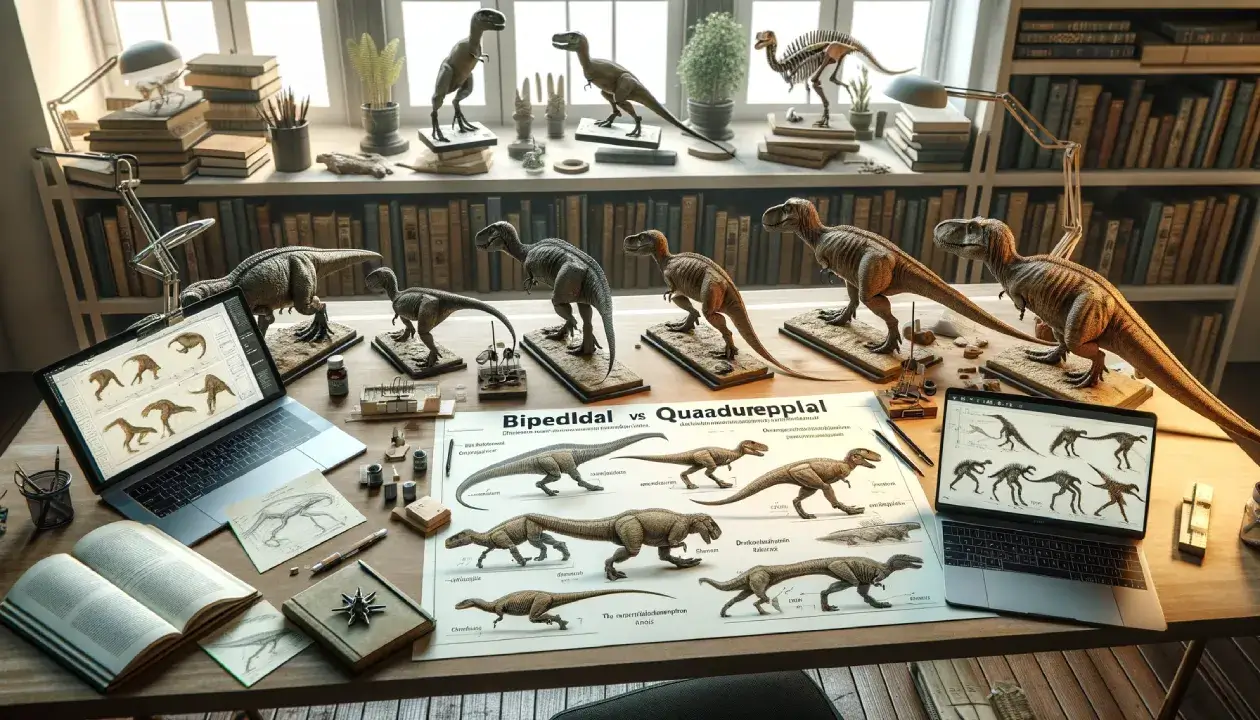The mystery of what dinosaurs really looked like captivates all ages. This article explores their size, shape, skin, and more, helping you to understand the physical appearance of these extinct creatures.
Fossil evidence guides scientists in piecing together dinosaur looks, despite uncertainties like exact skin colors. This study enhances our understanding of evolutionary biology and pre-human life on earth.
| Key Takeaways | Details |
|---|---|
| Huge diversity in size and shape | Ranged from crow-sized to over 70 tons. Varied body plans like long necks or armored plates. |
| Scales and feathers as coverings | Scales common but some had primitive feathers for insulation and display. |
| Specialized skull shapes | Based on diet like long snouts for fishing or box-shaped for vegetation. |
| Powerful hind limbs | Efficient locomotion like running. Digitigrade foot posture. |
| Tails for balance and defense | Provided counterbalance and anchored muscles. Some used in defensive strikes. |
| Good eyesight | Forward-facing eyes indicate depth perception. Large orbits suggest strong vision. |
| Reconstructed through multiple lines of evidence | Fossils, skin impressions, comparisons with living animals. |
So What Did Dinosaurs Really Look Like?
Dinosaurs displayed a huge variety of physical characteristics and lived on every continent. There were likely over 1,000 different species of dinosaurs that came in all shapes and sizes. Some key common features include:
| Feature | Description |
|---|---|
| Appearance | Reptilian with scaly skin |
| Size | Large, mostly bigger than modern mammals |
| Stance | Upright, not sprawling like lizards |
| Hind Legs | Powerful, used for running and walking |
| Forelimbs | Used for grasping prey or balance |
| Neck and Tail | Long, for balance and flexibility |
Despite some shared characteristics, there was great diversity between the numerous families and species. Different diets and ecological niches led to specialized adaptations. Next we’ll look at some key variations in dinosaur anatomy.
The Size and Shape of Dinosaurs
Dinosaurs ranged hugely in size from the crow-sized Microraptor to giants like the Argentinosaurus that weighed over 70,000 kg (77 US tons).
- Small species under 5 meters long include the swift Velociraptor and feathered Anchiornis.
- Medium sized types around 5-10 meters long comprise well-known dinosaurs like Stegosaurus and Triceratops.
- Massive dinosaurs over 12 meters long contain the lumbering Apatosaurus and enormous Tyrannosaurus Rex.
| Size | Examples |
|---|---|
| Small (<5 m) | Velociraptor, Anchiornis |
| Medium (5-10 m ) | Stegosaurus, Triceratops |
| Large (>12 m) | Apatosaurus, Tyrannosaurus Rex |
Body shapes also varied significantly:
- Long necks and tails: Diplodocus, Brachiosaurus
- Armored bodies: Ankylosaurus, Stegosaurus
- Swift theropod predators: Velociraptor, Deinonychus
- Stocky herbivores: Triceratops, Ankylosaurus
The diversity of dinosaur body plans gave rise to the dominance of these ancient reptiles for over 150 million years. Next we will examine what paleontologists have uncovered about their skin and colors.
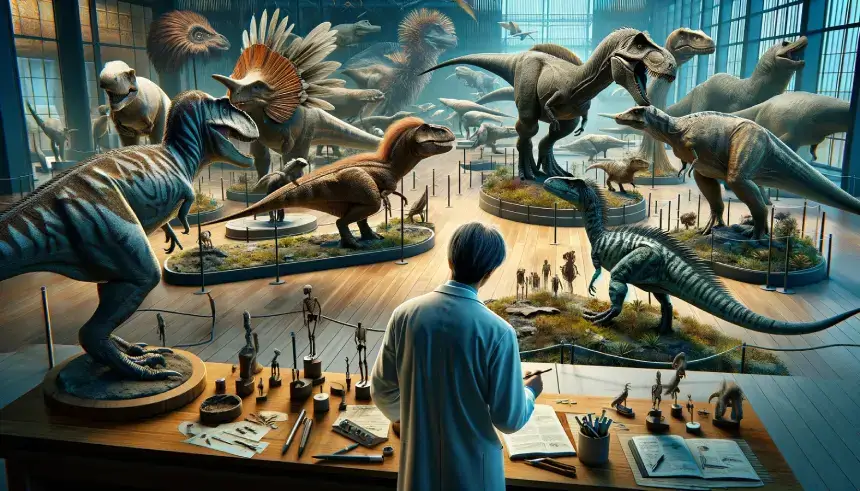
Skin and Coloration: What We Know
Reconstructing the skin and color of dinosaurs requires careful study of fossil imprints, remnants and analogous modern creatures. While much is still unknown, imprints of scales have been found preserved, indicating most dinosaurs were covered in scales like modern reptiles rather than smooth or hairy skin. Larger bony plates, spines or armor characterized the skin of armored dinosaurs like Stegosaurus and Ankylosaurus.
| Dinosaur | Skin Covering |
|---|---|
| Stegosaurus | Bony plates and spikes |
| Ankylosaurus | Bony armor |
| Velociraptor | Feathers on parts of body |
Primitive feathered dinosaurs and birds had feathers covering parts of the body. This allowed insulation and may have been brightly colored. Coloration was likely earth tones of brown, green, gray to camouflage with the environment, as bright colors would attract predators. Mottled or striped patterns may have helped break up body outlines. Bright display feathers are conjectured in some species.
Skin impressions show highly varied scale size and shape, with some dinosaurs having armored plating. Modern discoveries continue to reshape our understanding of dinosaur skin and colors. Up next we’ll look at debates around scales versus feathers in dinosaurs.
Feathers or Scales? Debating Dinosaur Coverings
The discovery of feathered dinosaurs in China in the 1990s challenged the notion that dinosaurs only had scaly skin. Evidence shows some dinosaurs evolved primitive, simple feathers:
- Feathers found in species like Microraptor and Sinornithosaurus point to feathered coverings on parts of the body, wings, and tail.
- These primitive plumes were likely used for insulation and display rather than flight.
- Some feathered dinosaurs closer to birds exhibited symmetrical flight feathers on the arms forming wings.
However, many dinosaurs still had scales like modern reptiles:
- Fossil skin impressions from Tyrannosaurus, Sauropods, and armored dinosaurs reveal scaled skin, sometimes interspersed with armor.
- Scales likely covered large swaths of big dinosaurs helping retain moisture and provide protection.
Both scales and feathers contributed to the success and diversity of dinosaurs in adapting to different environments.
Dinosaur Limbs and Movement
Dinosaurs’ muscular hind legs, balanced tails and specialized front limbs helped them thrive in the Triassic, Jurassic and Cretaceous periods:
- Powerful hind legs with thigh bones angled underneath allowed efficient locomotion. Many species were swift bipeds.
- Digitigrade foot posture (on toes) enabled rapid movement. Theropods like Velociraptor were likely swift runners.
- Long, balancing tails provided counterbalance for the head and torso in bipeds.
- Forelimbs had adapted for specific functions like grasping prey or walking on all fours.
These adaptations influenced major differences in movement between bipedal and quadrupedal dinosaurs:
| Type | Movement | Examples |
|---|---|---|
| Bipeds | Relied on hind legs | Theropods like T. Rex and Velociraptor |
| Quadrupeds | Walked on four legs | Sauropods like Brontosaurus |
Specialized limbs tailored to diet and lifestyle demonstrate the incredible adaptations of dinosaurs. Next, we’ll look at the key role tails played.
Tails and Their Functions
Dinosaur tails served critical functions in balance, locomotion and defense. They provided counterbalance for bipedal theropods and swift ornithopods. Tails anchored massive muscles that propelled the creatures. Ankylosaurs and stegosaurs used their tails in defensive strikes.
Flexibility of tails varied – some were stiff while others more agile. Without the tail as a central stabilizer and counterweight, many dinosaurs could not have reached such massive sizes. The tail was essential for balance and movement in these enormous prehistoric creatures.
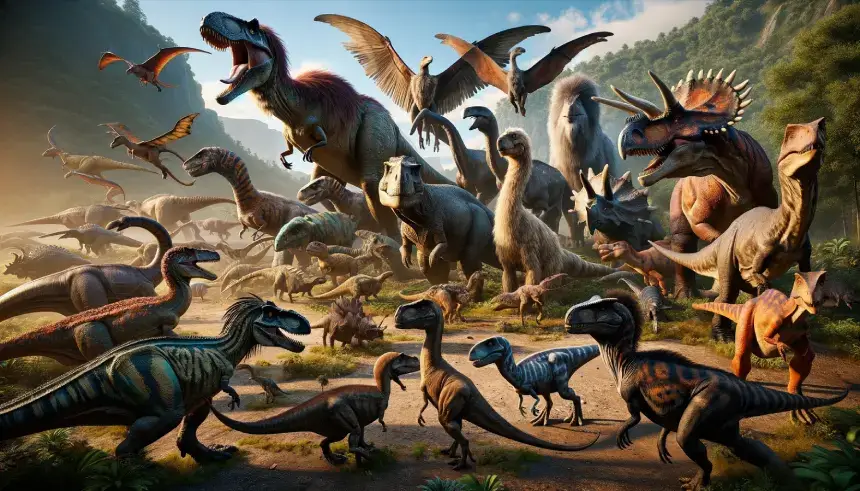
Facial Features: Understanding Dinosaur Heads
Dinosaur heads and snouts evolved into specialized shapes tailored to diet. Large, box-shaped skulls with rows of leaf-shaped teeth were ideal for chewing vegetation in sauropods and stegosaurs. Long snouts with pointed teeth were perfect for snatching fish in spinosaurs.
Short, deep skulls housing rows of serrated teeth allowed meat eating in carnivores like Tyrannosaurus Rex. Omnivores like Iguanodon had beaks, cheeks and specialized teeth.
Skull structure provides major clues into dinosaur behavior and ecological roles. The variety of specialized dinosaur skulls points to the evolutionary adaptations that allowed them to diversify and thrive in distinct environmental niches.
Eyes and Vision
While no dinosaur eyes have fossilized, studies of orbit (eye socket) size and placement suggest many dinosaurs had good vision, possibly better than modern reptiles. Large orbits in T. Rex point to great eyesight for hunting. Forward-facing eyes rather than side-facing in prey animals indicates 3D depth perception.
| Dinosaur | Eye Type | Vision Capabilities |
|---|---|---|
| Tyrannosaurus | Large, forward facing | Stereoscopic vision for hunting |
| Triceratops | Side-facing eyes | Wide field of view to watch for predators |
| Velociraptor | Forward-facing, large orbits | Binocular vision, detail perception |
Complex social dinosaurs may have had sharp color vision for displays. Nocturnal species likely had bigger eyes to see in dark. Vision played a key role in interactions, movement and survival for dinosaurs.
More discoveries could shed light on the visual capabilities that sustained dinosaurs for eons. Uncovering more about dinosaur eye structure and function will provide insights into how vision evolved in these ancient creatures.
How Do We Know What Dinosaurs Looked Like?
Paleontologists use an array of fossil evidence and technology to determine dinosaur appearance:
- Skeletal remains including skulls, limbs and tail vertebrae illustrate structural anatomy.
- Impressions of skin, scales, feathers and armor shed light on outer coverings.
- New technologies like electron microscopy uncover microscopic details.
- Comparisons with modern animals reveal insights about soft tissues.
| Type of Evidence | What It Reveals |
|---|---|
| Bones and skeletons | Structure, proportions, size |
| Skin impressions | Scales, feathers, armor |
| Comparative anatomy | Soft tissue inferences |
Discoveries occur on every continent, expanding the fossil data needed to accurately reconstruct dinosaurs.
Reconstructing Dinosaurs: The Science Behind It
Experts follow meticulous steps to reconstruct dinosaur anatomy and bring these extinct creatures to life:
- Examine skeletal remains and proportions to build a structural frame.
- Analyze imprints of skin or soft tissues like feathers to cover the animal.
- Study closest living relatives such as crocodiles, birds and reptiles for clues to outer appearance.
- Create anatomically accurate, fleshed-out physical models.
- Apply details like colors, skin textures, feather variations based on current evidence.
This combination of fossil evidence, living animal traits and informed speculation allows paleontologists to vividly reconstruct what dinosaurs looked like when they roamed the earth.
Conclusion
The appearance of dinosaurs varied widely between different species based on skeletal structure, size, limbs, skin coverings and habitat. While some aspects like exact coloring remain mysterious, fossil evidence and technology continue to improve our understanding of what these majestic prehistoric creatures looked like and how they moved through the world.
Ongoing research into areas like vision and feathers promise to uncover even more about dinosaurs’ physical traits and biology. Reconstructing dinosaurs is key to visualizing the diversity of these ancient animals that dominated terrestrial ecosystems for an immense period of time.

